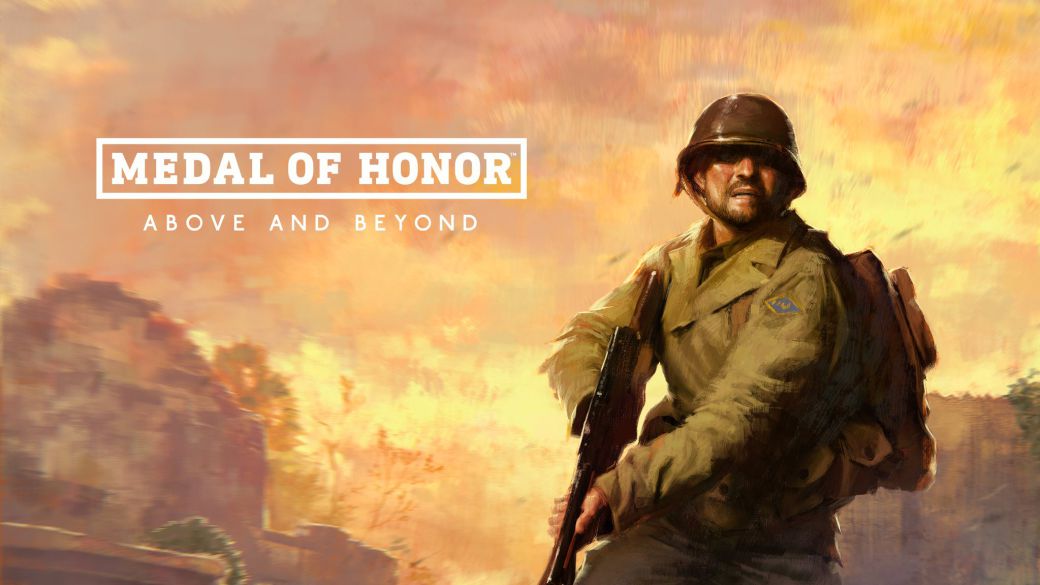
We analyzed EA and Respawn’s game for Virtual Reality with many moments to remember, but also not a few ups and downs.
Medal of Honor returns, and it does so with an unprecedented format so far: that of virtual reality. Since its announcement, we were not a few who followed with interest what one of the mythical sagas could tell us in this of recreating historical war conflicts. More than by the name of a series that has been off for some time, by the fact that Respawn Entertainment is behind it. Names like Star Wars Jedi: Fallen Order, Titanfall, or Apex precede them. A study that is synonymous with a guarantee of success and that when it comes to shooting in the first person, they know a while. So getting involved in a major project for Oculus attracted a lot of attention. The result is that sometimes it is brilliant, but other times – and not a few – not exactly what we expected.
We already talked in a preview earlier in the week of what we had played in the first of the six missions – not counting the prologue – in the game. We liked seeing the handling of the weapons, as well as certain moments of pure immersion that we had never experienced in a shooter like this. In return, we noticed that the enemy artificial intelligence was not at a great level and that many times, we felt we were more in a Time Crisis than in a virtual reality FPS. First thoughts and feelings that have been amplified, shaped and in some cases changed. This is our final rating for Medal of Honor: Above and Beyond.
It all begins with a prologue in which we barely made it out of a war zone alive after saving not a few comrades. Once in the hospital, we are checked, it is seen that we are in condition and we are invited to be part of the OSS to help the French Resistance against the Nazi siege in World War II. Before all this, a doctor begins to calibrate what we are going to see and feel while playing. From the on-screen indicators to how to interact with the Oculus Rift S controls, going through other tasks. Everything is in order.
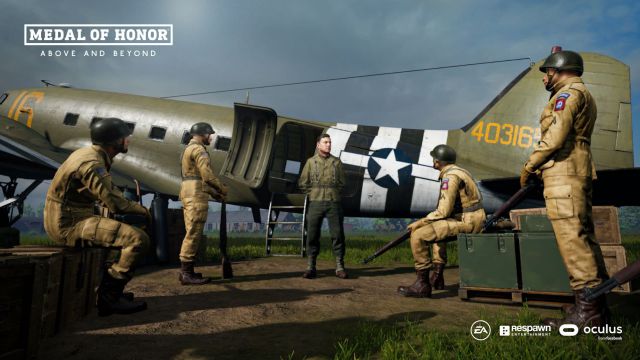
With the left stick we move, with the head we can look where we want and with the right stick we change, not continuously (it is missing) but in sections, where the camera is pointing. the side buttons of the controls allow us to take the weapons and leave them ready, so that the buttons on our index fingers serve to shoot. The game is quite agile and accessible when it comes to weapons: each one is in a different place: the pistol on the hip, two large weapons on the shoulders. The grenades, in the chest, where we stick the syringes to regain vitality. And to reload, we place the ammunition where it touches and remove the safety.
Although everything is designed to react quickly, it is true that it does not have the level of interaction and physics that Half-Life: Alyx, or the last Walking Dead. Surely it is not fair to compare it with the Valve game, because the comparisons lose them all, but it is a recent reference, from this year, and the differences there are palpable. The feeling is that we are in the middle of a world with which we have limited interaction, and that in 2020 is no longer valid. It is no longer enough. In any case, the handling of weapons is the most immersive in the game.
In normal mode, aiming has its crumb. We have to look carefully through the iron sight of the American rifle, calculate the recoil of the machine guns well and aim with the steady arm with the pistol. It’s without a doubt the best thing about the new Medal of Honor: how we realistically interact with each type of weapon to land a headshot. Also with snipers and their remote sights, which we enlarge or reduce with the movement of our head. Each weapon has its handling and it shows. And it is appreciated. In fact, we strongly recommend not testing the game in easy mode, because the target loses all its grace and with it, a large part of the game.
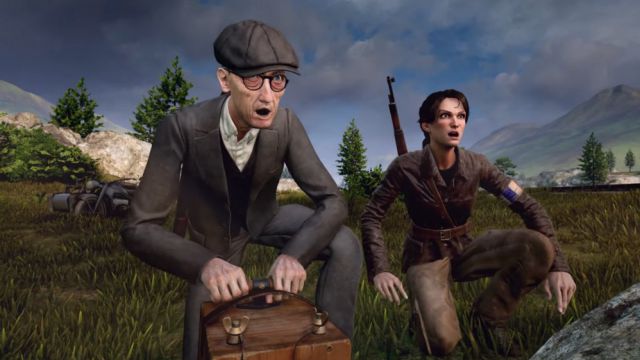
Six missions, six moments
The game makes us navigate through different missions with different circumstances. We already talked about the first one, in which the shootings with enemies coming from different sides were the most interesting while we looked for shelter and hid, kneeling in the middle of our living room, behind virtual stones. Per Above and Beyond goes one step further in the following chapters, and the wide variety of situations we find ourselves in are worth mentioning. Starting with our air battle aboard a fighter plane, from which we will shoot from a submachine gun, a heavier one or we will mark where we must drop the bombs. The intensity of this mission, with our head pointing in the direction we want to shoot just by moving it, is quite an experience.
In fact, it is at this variety of moments that Medal of Honor shines the brightest. There is a time when we control a tank and shoot 360 degrees. The way of aiming, so natural with the head, and the calculations at the time of the fall of the bullets or the trajectory of the enemy vehicles provide an outstanding degree of immersion. The same thing happens when, machine gun in hand, we travel through a forest at night on the back of a motorcycle and its sidecar. Or when, in the middle of an assault on a moving train, we decide to take an antiaircraft machine gun and fire at the fighters that are approaching us at full speed.
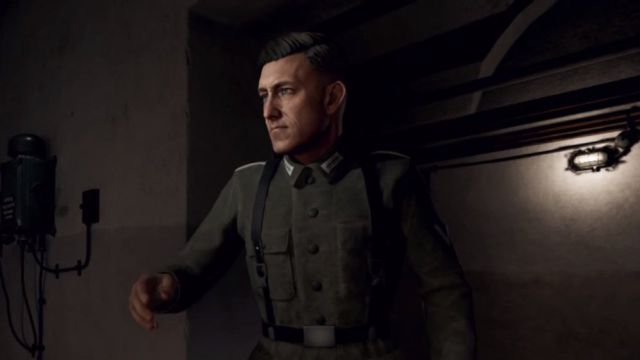
Medal of Honor: Above and Beyond often sins from being like an amusement park. The missions are certainly disjointed, and the development of them too many times is a mere excuse to be destroying the Nazis left and right in a thousand different ways. The good thing about this format, quite superficial when it comes to recreating the Second War, is that it allows you to experiment at the playable level with many spectacular and popcorn moments. That they are implausible does not mean that they are spectacular.
The problem is that it doesn’t always work. The game invites us to interact with a mine detector to pass through an area full of these deadly traps. Not to be discovered on a ship while we try to sabotage it. And to face hordes of enemies that, yes, always come perfectly staggered. And everything is going reasonably well for the first three episodes. But something starts to go wrong in the fourth and fifth. The formula does not scale as we expected.
That’s when sequences that no longer work so well begin to be introduced. Skiing down long snowy trails while shooting to one side or the other has little sense of speed and a lot of trail pre-assigned. Swimming in the sea in the middle of a sunken submarine is uncomfortable, tiring and not very comforting. We will not say that a funny situation is not recreated, but it is true that the way to interact with our surroundings in this situation is quite simple. As it is also simple certain very unconvincing climbing moments. Added to this is that there are several sections in which the interaction to sabotage, open doors, steal plans or plant bombs in a landing on a beach are mere transitions without a soul. In physics, in interaction, Oculus gives much more (Alyx, Lone Echo) and Medal of Honor tries to give it enough space, including talks and conversations, so that we take into account if they are not phases that are at the level.
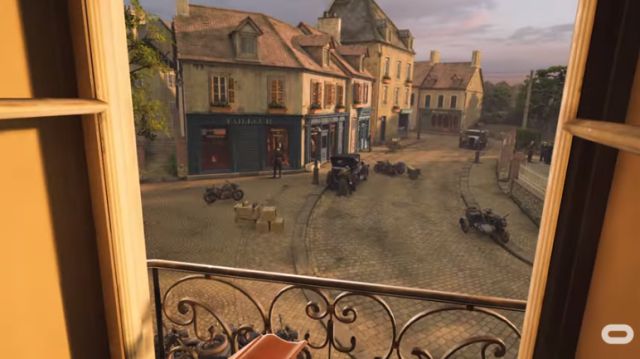
The last chapter recovers the pulse a bit with certain epic moments, although when we finish the game we have the feeling that the best, we had already seen in the first 7-8 hours that the campaign lasts in total. When you’re familiar with aiming and gun control at the equator, that’s when the enemy AI, many times static and without enough reaction, takes a toll. The global calculation of the experience for a player is that we have had a good time, we have had moments in which you make things only possible in virtual reality, but a reality is still present, the one that could have given for more. Note that once finished we can play each of the phases of each mission to get all the collectibles that are hidden in them, something that provides some replayability.
A gallery like a documentary
It is at this point where the inclusion of a gallery is surprising, and pleasing, that narrates, through the eyes of war veterans, events in World War II, such as the Normandy landing. You also go to locations lived in the game, like Omaha Beach through the eyes of one of the doctors who was there. This documentation is interesting because of the voice brought by witnesses of one of the bloodiest wars of humanity, although it is true that they are still two worlds that do not quite fit together. Like oil and water, one navigates through the gallery and those testimonies and it is difficult to connect them, beyond the staging, with what we live while playing the video game. There is something artificial, and we are not referring to the fact that it is a video game in itself, which marks very clear barriers in what we experienced and what those war veterans experienced. And this is not going to break Virtual Reality, at least for now.

A complete multiplayer
For its part, multiplayer comes to become an experience that may well be worth exploring in future installments and other disciplines. Although we have not been able to delve much beyond the organized games and it will be necessary to see how it works in a real environment and the servers open to everyone, we can say that both the performance and the modalities seem adequate to us. On the one hand, in Europe we had a ping of around 30ms, something that allowed a solvent experience in this sense. On the other hand, the multiplayer numbers are solvent with nine available maps, taken from moments of the campaign, and a good variety of modes.
In addition to the classic team duel, the all against all or the domination mode, the game has other proposals such as the explosion radius: a mode in which we had to place ourselves within the points that were emerging on the map so that, killing from within, they will give us more marks. Finally, a crazy mode based on a free-for-all in which everyone has a timed bomb that they can leave stuck anywhere and that explodes after 30 seconds. If we kill someone, we score many more points. All modes allow a maximum of 12 players and also the possibility of bots that, yes, are quite clumsy.
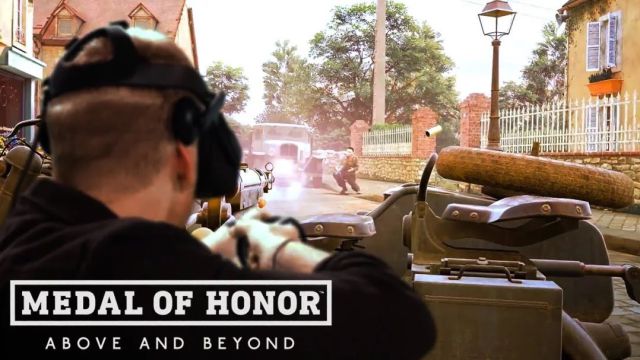
The game experience is completed with a survival mode in which we must endure as long as possible, killing as many enemies as they appear to us, and getting the highest score.
At an audiovisual level, it is not the most spectacular title that we have seen in Virtual Reality, and it handles better indoors than outdoors, but it is also true that it has spectacular moments, such as seeing a large vehicle on fire or certain explosions, and that models of several of our fellow travelers are well done. It lacks more detail and richness in what surrounds us, of that there is no doubt. The game is with voices in English and subtitles in Spanish.
Score: 6.5
CONCLUSION
Medal of Honor: Above and Beyond wants to be the veteran saga that makes way for warlike FPS in virtual reality, and there are times when it succeeds. The handling, aiming and response of the weapons is quite an experience, and we will quickly be covering ourselves, throwing grenades and reloading while we try to kill the Nazis that appear to us. It is in the variety of situations on the back of planes, trains, boats or tanks, where the game grabs you: for variety and for precise control impossible without VR. But the experience is diluted after the middle of the campaign, the enemy AI is quite simple and the development of the missions, erratic. The taste ends up being bittersweet because when it promises high-flying action, it works. But it doesn’t always deliver. The scarce interaction with our environment also worsens the global calculation of the experience. Solvent multiplayer with various modes, maps, and tight ping balances the scales and opens up a path that will be interesting to see in other installments and other franchises. It has extras, like the gallery, that are worth stopping at. Although it leaves us feeling that it is far from what it could have been.
THE BEST
- The handling of some weapons and vehicles, impossible to do if it is not in VR
- Several spectacular and action-packed moments
- Multiplayer mode with various options
- The galery
WORST
- The campaign is diluted towards the middle, losing interest little by little and with an improvement structure
- A very simple enemy AI
- Little interaction with what surrounds us for what we have already seen in the middle
Right
It’s not the latest or the most original, nor does it have the best execution, but it can be fun if you like the genre. Good, but room for improvement.
